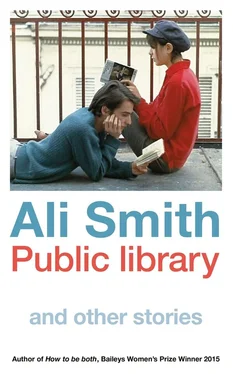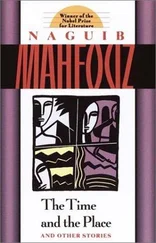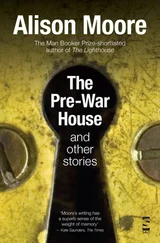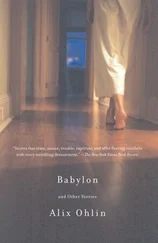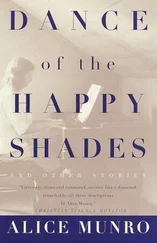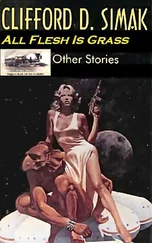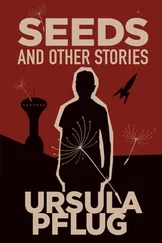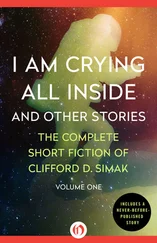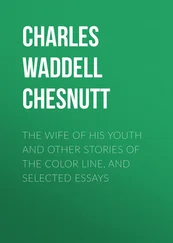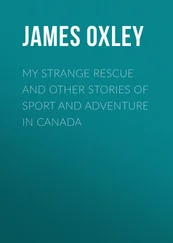It isn’t porn, he says.
He looks straight at Emily.
It’s bike gear systems, he says. It’s fourteen, twenty-one, twenty-seven gear systems and speed hubs.
That’s crap, Emily says. I saw. You were watching a porn movie with a gang bang in a prison.
I was not, he says. That’s a YouTube clip of a film star in a foreign film where she goes to prison by mistake and in the cell these men crowd round her and sing a song. And she is really beautiful, and innocent. I don’t mean innocent in a perv way, I mean innocent of the crime she is put in prison for.
He has gone bright red from the neck to the roots of his hair. But he stands up decisively, pushes his chair back, stands up, leaves the room.
Geek, Emily says without taking her eye off the TV.
Emily, that’s enough, Ellie says.
Yeah, well, if he can go to bed so can I, she says. And the difference between then and now is that now I’m supposed to wear clothes that make me look like a prostitute and if I don’t I’m not a proper girl. And now it’s okay to be friends with Hana at school and everything but out in the world I’m supposed to think she’s one of them not us and that her family are them not us too and that if her big brother isn’t a terrorist already then it’s only a matter of time.
She switches the TV off on her way out.
My wife stands up. She stares at the off screen.
The difference, she says in the after-TV silence, is that over the last ten years new communication technology has brought people so much closer together.
She gives no sign that she’s joking. She picks up as many of the things on plates as she can carry, backs out of the room, lets the door fall shut behind her. I hear her putting things away in the fridge. Then I hear her going slowly upstairs.
Chloe has her head down on her arm on the table. Her eyes are shut.
What about you? I say.
The difference between then and now, is, Chloe says. I wasn’t here then, and now I am.
A moment later she’s asleep. I look at the top of her head, at the way her hair knows to shape itself. I pick her up and shoulder her, carry her upstairs, tuck her in.
On my way out of her room I see the beloved DVD on the computer desk. I take it with me and go back downstairs.
I turn the sound down low.
These films are all from the first decade of the last century, the voice-over tells me. They were throwaways, made for a quick buck. It’s a miracle they still exist. ‘Local Films For Local People.’ ‘Come And See Yourself On The Screen As Living History!’ They’d be made in the afternoon and shown that same night in touring fairs or theatres, and the filmmakers would cram as many local faces in as possible so the number of people paying to see themselves would be maximum too.
I switch the voice-over off so I can see better. The first years of the last century flicker away in silence. The films are of happy-looking crowds, schoolyards full of children demonstrating to the camera how healthy and happy they are, workers waving and smiling. There’s quite a bit of poverty. But in film after film of seaside promenades, football matches, people in hats at Whitsun, people at fairs, people rolling Easter eggs down hills, the hundreds and hundreds of dead working people wave their hats and handkerchiefs in circles in the air, wave at the camera, at themselves. The children are especially curious and excited. It strikes me they’ll be cannon fodder for Ypres and the Somme in just a decade’s time.
I get to a film made in North Shields in 1901. It begins with hardy-looking girl-fishgutters, a shot of boats, a large crowd gathered round a harbour. Then, in among the people, a small boy in a flat cap notices the camera and turns towards it as if towards me, here, now, more than a century later sitting in this room of empty chairs in the middle of the night. He resembles Chloe slightly. He disappears out of frame, then ducks back in. That’s what she’d do. He doesn’t wave. He isn’t delighted. He’s questioning, grave. He means business. He wants to know. There is no other way to put it: he is completely alive. The life in him pierces me.
He is ten years old at the turn of a new century and less than a minute long. For as many of those seconds as he gets the chance to, he looks the future in the eye. He walks towards it, holding its eye steady in both of his.
Eve Lacey spoke to me about the way books carry their histories, and about the new history of public libraries.
She’s the current Library Graduate Trainee at Newnham College Library in Cambridge; she’d previously worked in a public library in one of the local villages, a fairly well-heeled place, though even there, she said, the most vulnerable really need and use the library, the homeless and jobless people, along with a real mixture of all the generations, especially elderly people and young mothers with children. She told me about the pressure on the public library service to move from council funding to volunteer status, about the way the community there has rushed to protect and sustain the library, about the inevitable catch-22 downgrading situation when something shifts from public funding to less or no funding, and about the official council letters that circulated concerning desperate money-saving tactics (‘a 1 per cent reduction in pay would save approximately £1.28 million … therefore a 2.4 per cent reduction the necessary £3 million savings … one day of unpaid leave would save £0.4 million … the withdrawal of pay increments for the year would save approx. £1.4 million … stopping the first day of sick pay could save approx. £0.5 million and stopping the first two days £0.8 million’).
She told me about the unbelievable length of the queue of excited local children taking part in the Summer Reading Challenge there, a literacy-encouraging initiative where a child reads a book a week then comes back and tells the librarian about the book; she said the line of children wanting to talk about the books they’d read stretched out the door.
She told me about why the Rare Books Rooms in libraries keep books at a certain temperature — because the leather which binds early books is always trying to get back to the original shape of the animal whose skin it was, and the temperature regulation keeps it book-shape. She told me that 250 Bibles bound in calf leather generally equalled 250 actual calves. She told me that the gilt on the edges of books has antiseptic properties, being part gold, and dust-repelling properties. Proper gilding cleans itself.
Then she and the Librarian, Debbie Hodder, took me through into the stacks of the college library (a library formed against all the odds in the late 1800s — the women who studied at Cambridge, which didn’t admit women as full members of the University till 1948, weren’t permitted to use or access the University’s books; the library is, more than a century later, one of the best-stocked college libraries in the city). They showed me a lock of Charlotte Brontë’s hair coiled inside a ring, told me the library also happens to hold in its collection a tennis dress of the 1890s which looks like it would be incredibly heavy to wear, and they let me see several books, including one called An Elementary Treatise on Curve Tracing, by Percival Frost (1892), which begins: In order to understand this work on the tracing of curves whose equations are given in Cartesian coordinates, all that is required of the student is that he shall know the ordinary rules of Algebra as far as the Binomial theorem, the fundamental theorems of the Theory of Equations, and the general methods employed in Algebraic Geometry.
Inside the front cover of this book there are a couple of pasted-in notices. On the left-hand inside page, the notice reads:
Читать дальше
